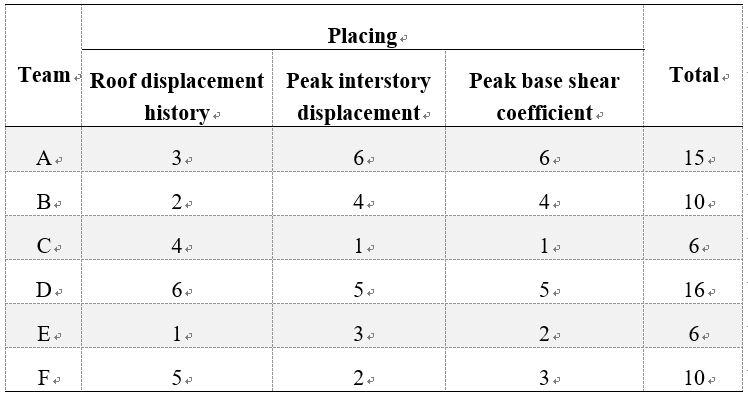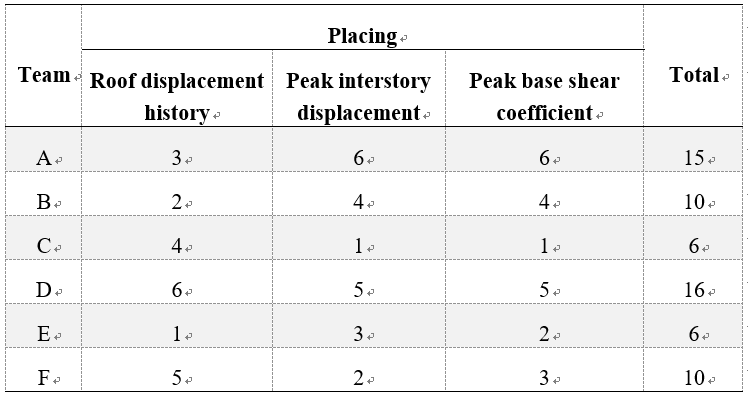1. Contestants may participate as a team or as an individual, though the same person may not be involved in multiple submissions.
2. Contestants are to predict the following response:
1), Roof displacement history relative to the shake table surface for each of the three ground motions applied in time intervals of 0.01 s.
2), Peak interstory displacement of each floor for each of the three ground motions applied.
3), Peak base shear coefficient for each of the three ground motions applied.
3. Contestants should submit their results in a spreadsheet provided. In addition, contestants should provide a short summary of their numerical approach in the form of the World Conference on Earthquake Engineering paper format.
4. Contestants will be provided building drawings, including detailing of non-structural components. Material test results will also be provided to contestants once available.
5. Unfiltered shake table recordings from the experimental tests will be provided to participants mid/late December.
6. A representative from the top three teams will be invited to present their modelling approach at a special session at the World Conference in Earthquake Engineering in Sendai, 2020.
7. Accuracy of each of the displacement history response will be assessed using sum-squared-error (SSE) as follows:

8. Accuracy of the peak drift responses will be assessed using sum-squared-error of natural log (SSENL):

9. Accuracy of the base shear coefficient response will also be assessed using SSENL using base shear coefficient values instead of drifts.
10. For each of the three building response categories, contestants will receive a score based on the error recorded, with 1st place (lowest error) receiving 1 point, 2nd place receiving 2 points, etc. The top three teams will be the teams with the three lowest total score. If the top three cannot be determined due to multiple contestants being tied with the same score, the tied contestants will then be ranked according to their placement in the “roof displacement history” category.
Example
Consider the following scenario where six participants are ranked in each of the three categories. Team C and E are automatically in the top 3 as both teams have the lowest points total in the competition. While B and F are tied in terms of total points, team B has a higher placement in the “roof displacement history” category and thus would also be awarded the final position in the top three.

1. コンテストの参加は団体および個人どちらでも可ですが,同一者の複数参加は禁止します。
2. コンテストでは,3加振(計測時間:0.01s)を予定しており,以下の応答値を予測していただきます。
1), 振動台からの建物頂部の相対変位
2), 各階の最大層間変位
3), ベースシア係数
3.予測値は,こちらが提供するスプレッドシートにて提出していただきます。また,WCEEの書式による簡単な要約も提出していただきます。
4. 参加者には,非構造部材を含めた図面を提供します。また,必要に応じて材料強度も提供いたします。
5. 験データ(フィルタリングは無処理)は、12月中旬/下旬に提供します。
6. 上位3位のチームは,2020年仙台で開催されるWCEEの特別セッションにて講演してもらいます。
7. Accuracy of each of the displacement history response will be assessed using sum-squared-error (SSE) as follows:
